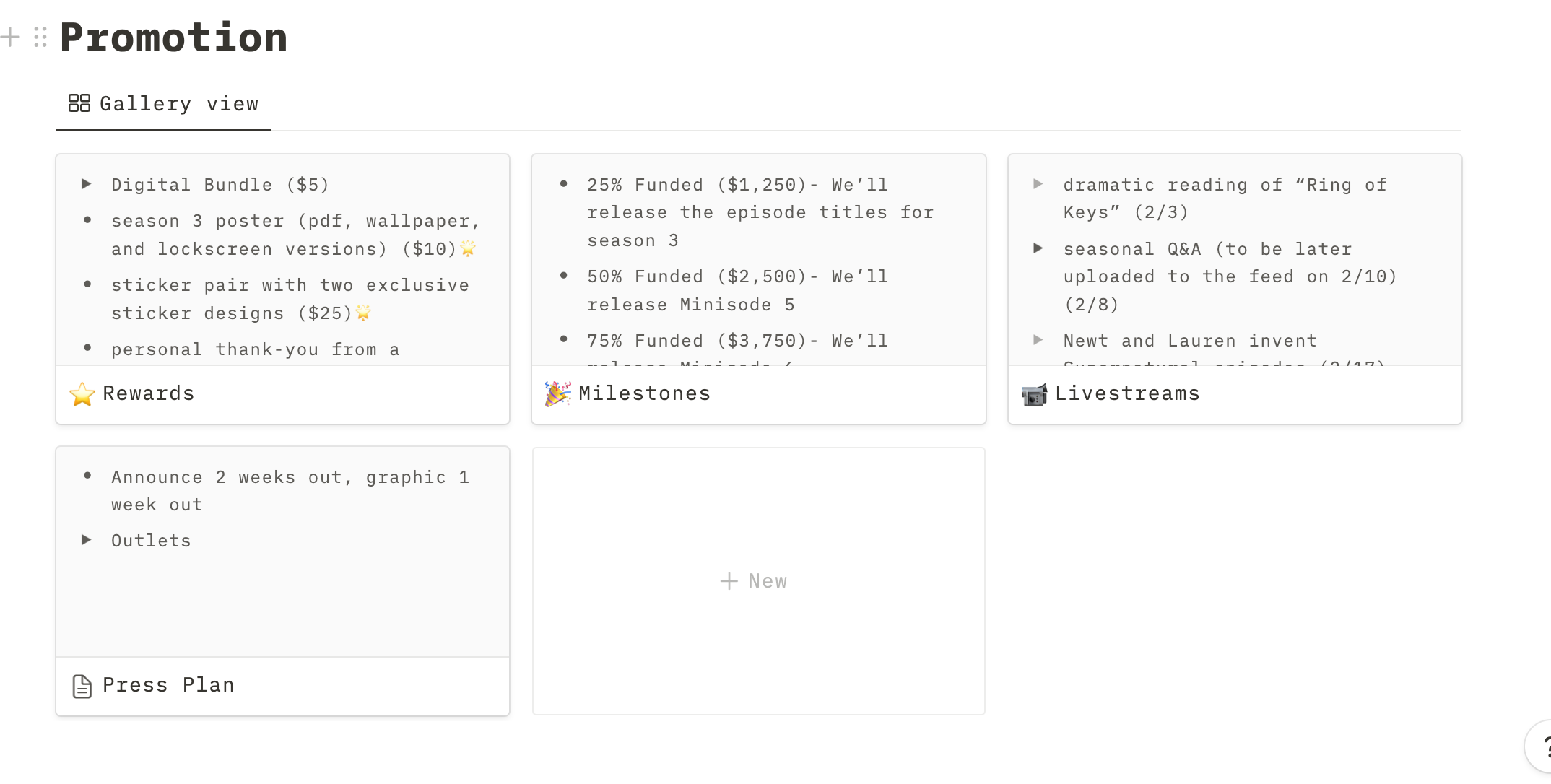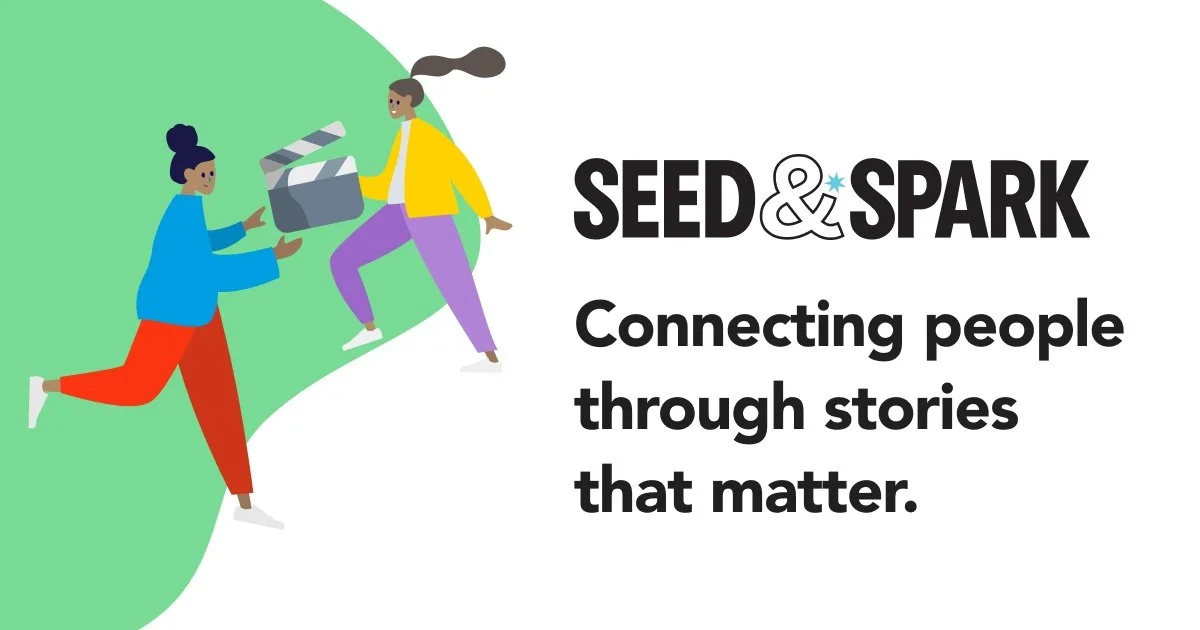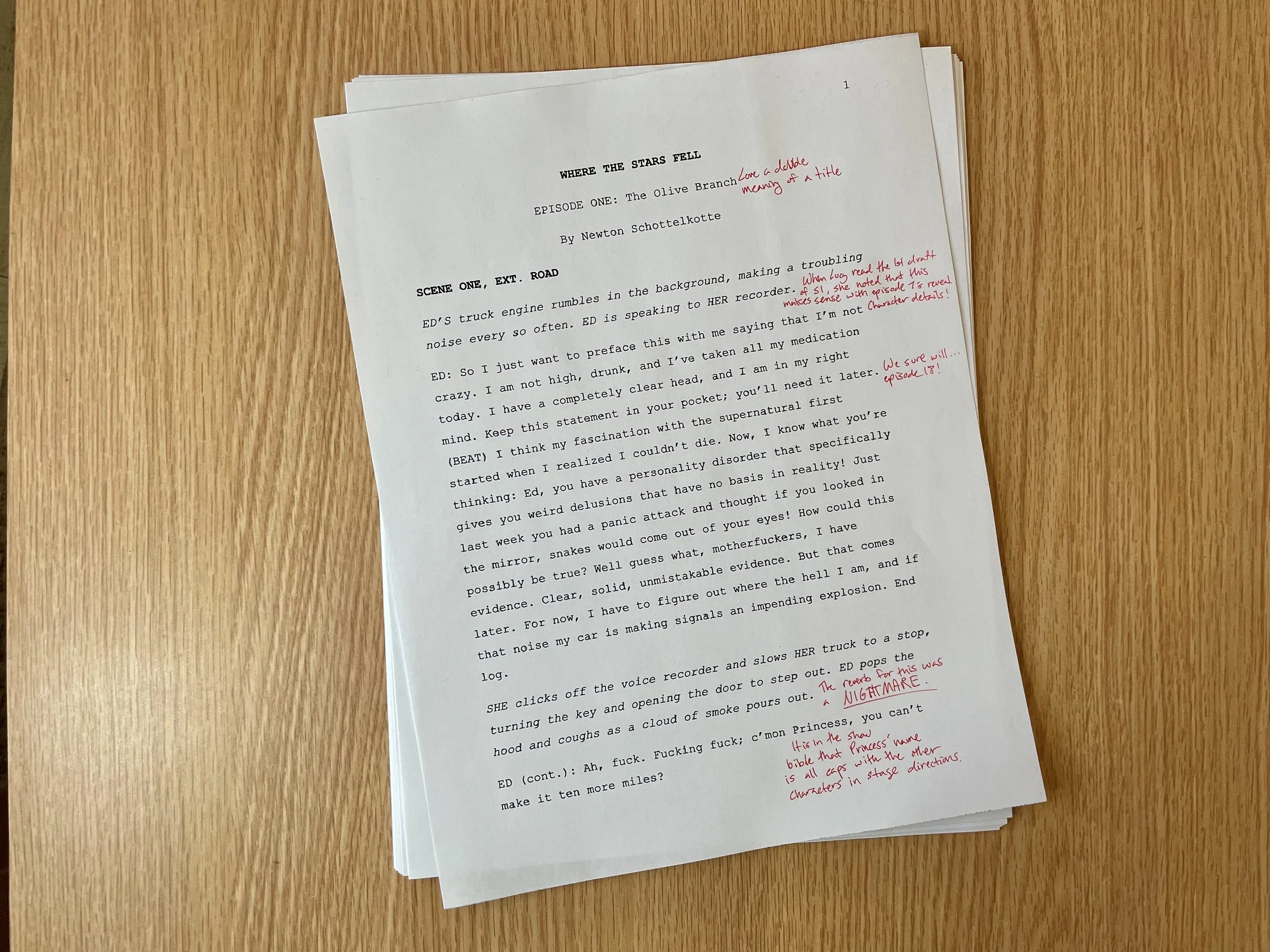How To Crowdfund Your Podcast
Slow and steady prep increases chances of a successful campaign
When training to run a marathon, the first thing you learn how to do is pace yourself.
Crowdfunding is like that marathon, except your shoes are on fire and the route is on fire and if you don’t complete the race after a certain time, you could be face to face with disappointed fans, a poor reputation, and not getting to make a project you’re excited about.
That philosophy applies to many parts of producing a show – I would know, as I’ve made my own original shows under Caldera Studios, including several fiction and non-fiction productions. Up until the latest season of my fiction show, Where the Stars Fell, all of my productions have been either volunteer, paid passion rates, or a combination of both. When preparing to produce season three, however, it was time to step up our production value and pay my cast and crew as fair a wage as possible for their hard work.
Without studio backing, crowdfunding is one of the best ways to get your podcast funded. It pays to know how to build hype, come up with rewards, and organize everything sustainably.
Crowdfund Best Practices
I recommend running a one month campaign with a mix of digital and physical rewards, planned bonus content to release at milestones, and a variety of engagement avenues throughout the campaign to keep your momentum going. But organization is most important of all.
One of the most common mistakes I see first-time creators make is to generate a lot of news about their crowdfund during the first few days of the campaign, then peter off to posting maybe once a week, and then comes radio silence after they inevitably don’t meet their goal due to lack of consistent engagement.
I’ve seen very few crowdfunds reach 100 per cent funded within the first week, and the ones that do meet their goal by the end of the campaign usually do so by constantly reminding their audience to donate and share. If you’ve ever had to set seven alarms for yourself to remember to take the trash out, you know: getting humans to do something takes consistency.
Most of the podcast crowdfunds I’ve seen run for about a month. People are more likely to make non-essential pleasure purchases (like backing a crowdfund to receive a cool set of stickers for a show they like) right after they get their monthly paycheck. But not everyone gets paid on the first, so pace out reminders so the person who gets paid on the 15th or 27th is reminded to put that disposable income toward your project.
Sticker mockups
Seasoned producers know that planning a good crowdfund takes months of preparation, from sourcing suppliers for physical rewards (prints, t-shirts, signed scripts, posters, etc.) to creating graphics and copy, and queuing all those social media posts. Some things you’ll have to be prepared to improvise like a social media trend that’s perfectly related to your content, hitting 100 per cent funded earlier than expected, or winning an award. The best way to avoid burnout and overwhelm is eating that elephant one bite at a time.
Here’s a simplified timeline of how I prepared for our crowdfunding campaign.
If you’re an exclusively non-fiction producer, things might look a little different content-wise, but the core lesson still applies: slow and steady keeps you sane.
THREE MONTHS UNTIL LAUNCH DAY
I set up a page in digital whiteboard program Notion for the campaign. It includes all the revenue sources for the season (Patreon, Bandcamp, and ads on the show), our budget, sections for scheduling promotional events, and a big to-do list. This is how I’ll stay organized.
I decide our crowdfunding website will be Seed&Spark. I like that they have personalized customer service. That means your campaign is reviewed by a real human being before it can go live. They even give suggestions for improvement.
Season three scripts are finished! I decide on the milestone rewards for the campaign: episode titles released at 25 per cent, a minisode dropped on the main feed at 50 per cent, another at 75 per cent, and a sneak preview of the season premiere script at 100 per cent to be posted on our social media accounts.
I first saw Wooden Overcoats do milestone minisodes during its first crowdfund. I thought the massive success they saw with that tactic was worth the extra work. The two hardest percentages to hit in a campaign are 50 per cent and 75 per cent; that middle stretch can lose steam because folks don’t want to bother backing a campaign that might fail. My solution was a simple reward for 25 per cent that could be easily posted to social media to build hype for the end product, and two eight-minute minisodes in the middle to give folks a tangible reward that was directly related to the thing they were backing: new Where the Stars Fell content.
Voice actor lines for the crowdfund minisodes are recorded, and production moves to sound design and final polishes for the minisodes.
I decide that there will be seven different tiers of pledges available, ranging from $5 to $666, to offer lots of options for folks.
TWO MONTHS UNTIL LAUNCH DAY
I get a crowdfunding consultation session from an industry friend who’s run many successful crowdfunds – as a writer, I always get a second pair of eyes on my work.
I commission art from three artists for three crowdfund rewards (a season three poster, a design for a print/tote bag combo, and a pair of stickers). This is the earliest bit of reward production prep I’m doing, because art-based rewards like posters and prints can be added to promotion and social media posts to increase the chances of people taking a look. Humans love images!
Lower tiers are usually the most popular due to their price, so I decide on what’s going into the $5 digital bundle. Non-physical rewards work best for lower tiers because it means less shipping. I include a fully produced deleted scene, sheet music for our popular soundtrack, a bunch of short stories, and a personalized thank-you graphic posted on social media. That last one is a must for any campaign – it’s free advertising! Graphics remind followers the campaign is happening and they show people are donating and it has momentum. People tend to be more willing to back a project that looks like it will succeed.
I write crowdfund copy for the campaign page on Seed&Spark, and a video script for the campaign page that outlines our goal. We’re an audio-only medium, so the focus will be on familiar faces from the cast, simple visuals, and engaging copy. This is our third season, so I want to make sure backers unfamiliar with the show can learn what we’re about, get intrigued, and be inspired to donate.
I set up a Twitch page for the show and reach out to industry friends to invite to weekly livestreams. These keep up momentum and build connections with your audience. Special guests will bring their audiences to your show, which is why I favour a mix of fanservice (a live dramatic reading of a beloved short story) and guest-focused streams (a Jackbox game night with fiction podcast creators). I still do not entirely know how Twitch works and I am too afraid to ask.
I make a list of news outlets and industry newsletters to send our press release to. Most importantly, I research how they like to be pitched. Personalizing each email ensures it’ll actually be read! I subscribe to a lot of podcast newsletters already, but asking around in community spaces, or following folks like Lauren Passell and Arielle Nissenblatt on social media is a great way to find more.
After gathering recommendations from colleagues who have crowdfunded before, I decide which suppliers to use for physical rewards and factor those into the budget.
ONE MONTH UNTIL LAUNCH DAY
A delayed flight means I spend the entire wait, plus the flight itself, making graphics: images for social media, a template for supporter thank-you’s, and a cast announcement to release in week three of the campaign.
So. Much. Social. Media Scheduling. On multiple platforms.
The video script is uploaded to the campaign page, and I submit it for Seed&Spark’s first review.
I write the copy for the rest of the rewards, like a voice cameo in a season three episode, a personal recorded message from a character, and a hand-annotated script of the backer’s choice.
TWO WEEKS UNTIL LAUNCH DAY
I reach out to other fiction podcasts with releases soon and offer a promo swap or feed drop. This helps drive new listeners to the show.
Final edits are made on the image-based rewards.
I write and record three campaign announcements: one for the main feed when the crowdfund launches, another to run as a pre-roll ad, and the last for promo swaps.
ONE WEEK UNTIL LAUNCH DAY
I take photos of all the physical reward samples and add them to the campaign page.
I finalize our press release and send it out with a preview link to the campaign page, our announcement graphics, and the show’s press kit. I make a press kit for every new show I produce; you can check out Where the Stars Fell’s here.
I film and edit our crowdfund video and upload it for Seed&Spark’s final review.
ONE DAY UNTIL LAUNCH DAY
I double-check everything for typos and inconsistencies: my copy, rewards, graphics, templates, etc.
I set an alarm to launch the campaign at 10 a.m. the next morning, create the announcement thread on Twitter and Tumblr, and pin those posts on the show’s social media accounts.
I buy two bottles of melatonin gummies and my emotional support snack: white chocolate covered pretzels.
I go to bed early so I can bolt upright just as I’m about to fall asleep, having forgotten one last thing. This will happen; you cannot prevent it; just plan for it. In my case, it was a photo of one of the rewards I forgot to add.
Good luck, and happy crowdfunding!
And if you appreciate the advice, you can show your thanks here until March 3rd!







